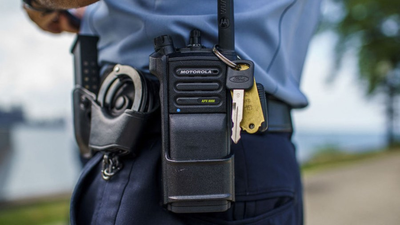
(WTAJ) -- Have you ever heard someone, possibly a police officer, respond by saying "10-4?" What does that mean and where did it come from?
Meaning acknowledgment or okay, "10-4" comes from the 10 Codes list that emergency personnel use to communicate with each other, commonly done over the radio.
Ten Codes are sets of numbers beginning with the number 10 and used -- originally by police -- as a form of shortened communication. There are dozens of code combinations, depending on where they are used or the line of work using them.
However, to understand 10 Codes, it helps to understand the background of the radio and Morse code.
History of the radio
The first radio was invented in 1896 by Guglielmo Marconi. Throughout the 1900s and 1930s, he created various versions that could send wireless signals, with a few adopted by the BBC and other organizations for wireless broadcasting.
Before the 1920s, radio was only used to contact military ships at sea, and in those years, Morse code was used for communication because the signals to transmit messages were often unclear. After World War I and throughout the 1920s, radio became widely used by citizens, and commercial radio became popular.
Although radios were becoming popular in the 1920s and 1930s, radio communication still needed improvement. Transmissions were difficult to understand, with words being cut off and phrases being too long to follow. In 1937, the Association of Public Safety Commissions (APCO) changed the way communication was done over the radio.
How 10-Codes came to be
Although radio had expanded to non-military and non-emergency personnel, police used it for most of its early years. This also meant radios were often in short supply for officers, making shortened speech important to reduce the time needed to communicate with other officers.
To send a message, radios also needed time to completely charge up, so a short syllable word such as "ten" made it easier for the transmitter to capture and send the shortened message. In 1955, the use of the 10 Codes became standard for police officers.
Truckers also began using radios to communicate with one another while on the road and faced the same issues with choppy or unclear transmissions. So truckers also adopted a set of 10 Codes similar to that used by police.
Hollywood sparked 10-Code popularity among the public with the crime drama series "Highway Patrol," which shows police officers fighting crime using patrol cars and two-way radios. In 1978, the movie "Convoy," a comedy about truckers, was released. Radios began flying off the shelves, and the public became much more familiar with 10 Codes.
Some examples of police 10 Codes include:
- 10-1: Signal Weak
- 10-2: Signal Good
- 10-3: Stop Transmitting
- 10-4: Acknowledgement (OK)
- 10-10: Fight in Progress
- 10-29: Check for Wanted
- 10-31: Crime in Process
- 10-33: Emergency
So whether it's police communication you're hearing or just looking for a new way to let people know you heard them loud and clear, now you know what 10-4 means.